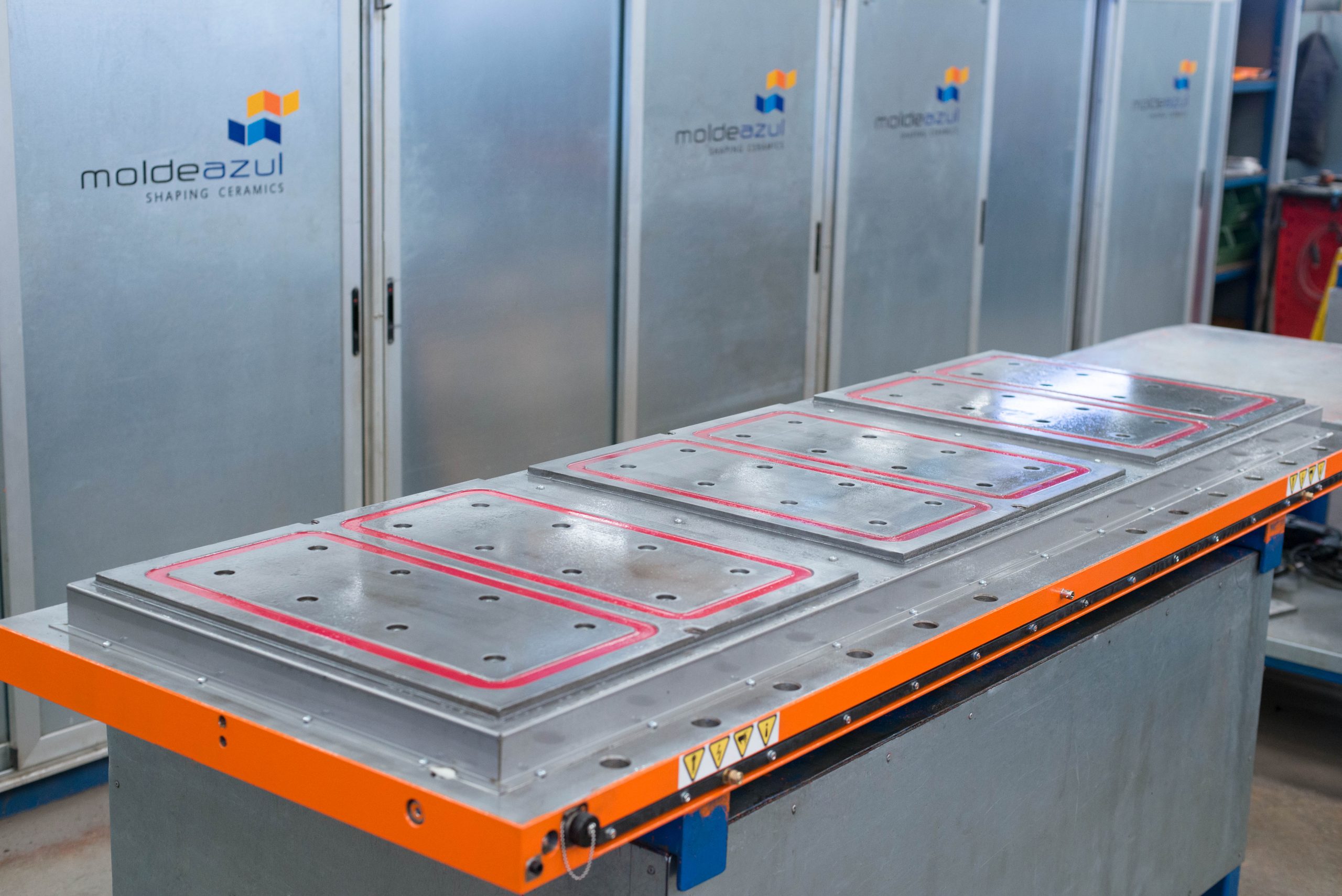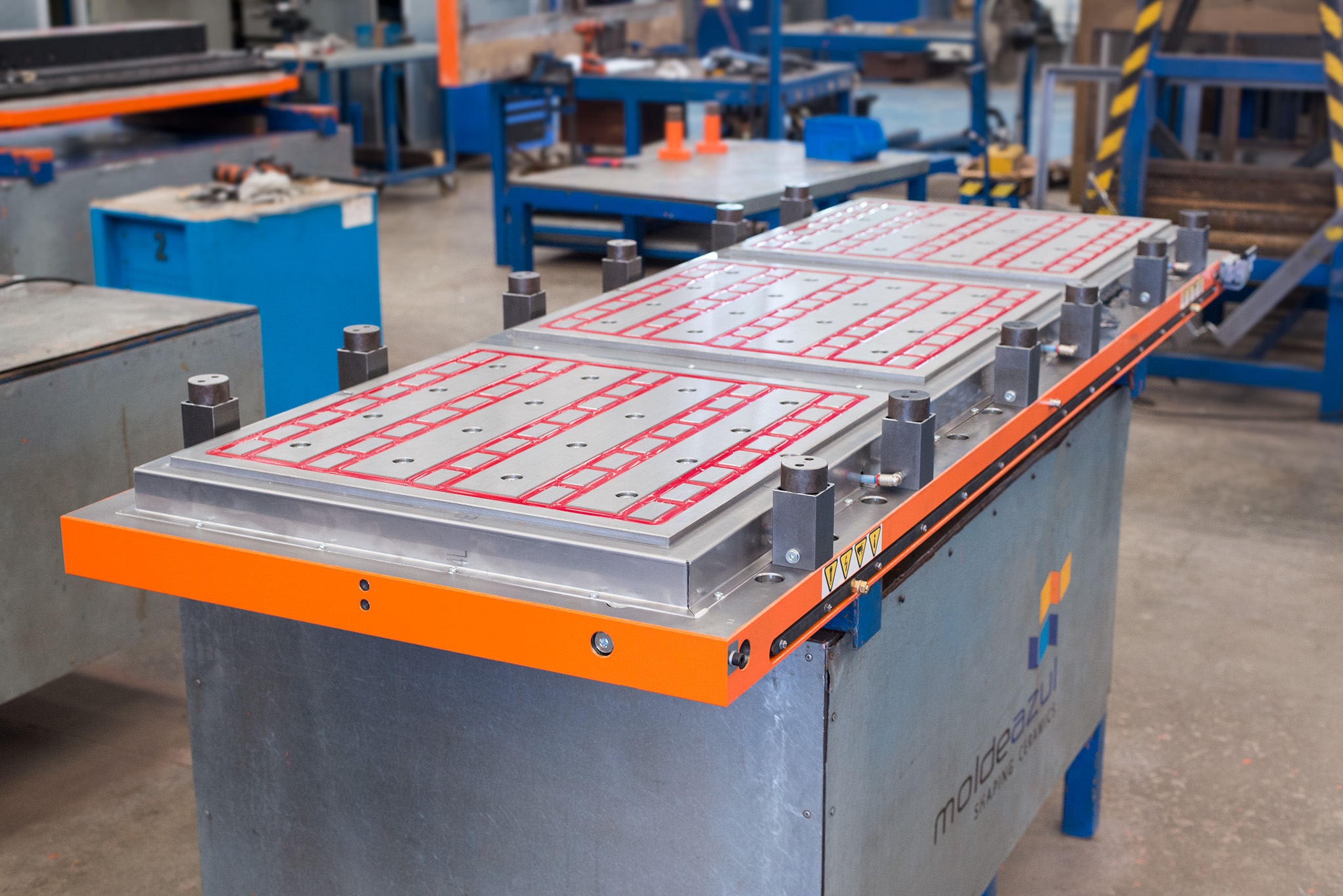The main porpouse of the UPPER PLATE is to magnetize the upper punches in the main upper plate.
There are two types of upper plates; UPPER ISOSTATIC PLATE and UPPER NON ISOSTATIC PLATE. The main difference between them is that the UPPER ISOSTATIC PLATE compensates the pressure that the press makes, so all the pressure is the same in all the cavities, therefore the same thickness is achieved for all the pieces.
On the other hand, there are two types of isostatic upper plates depending on the system used to fix the upper punches:
UPPER MAGNETIC ISOSTATIC PLATE
It is needed a direct current of electricity to magnetize the upper punches in the upper plate. If there is any time when the electricity goes out, the upper punches will demagnetize from the upper plate and they will fall. This will cause damage in the mould and on the upper punches.

UPPER ELECTROPERMANENT ISOSTATIC PLATE
The upper punches are magnetized to the upper plate through an electrical impulse, polarizing the plate and thus preventing the plate from being continuously connected to the electrical network. This system prevents possible work accidents or damages on the material in case there is a loss of electricity.

ADVANTAGES OF THE UPPER ELECTROPERMANENT ISOSTATIC PLATE:
The use if this type if upper plates increase the useful life of the upper punches since having the same pressure in all the upper punches, they enter perfectly levelled and perpendicular to the plane of the mould, thus avoids possible chafing. These plates are therefore able to reduce the wear of the punches considerably.
In this type of plates, as the pressure is the same in all the cavities, the same thickness and measure is achieved in all the cavities of the mould.
This type of upper plates offers a greater safety at work since in case the power goes out the upper punches will continue magnetized to the upper plate and therefore they will not fall.

